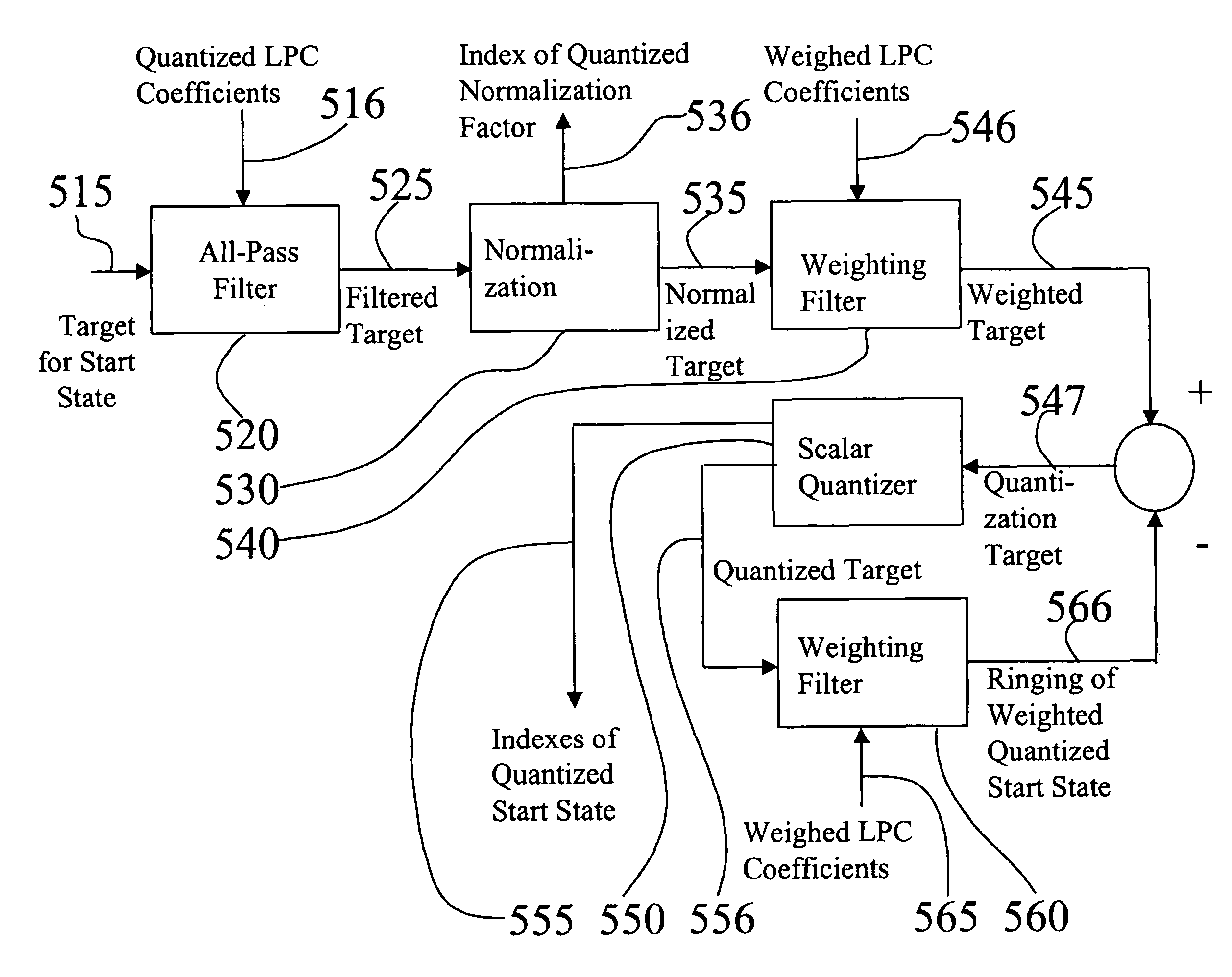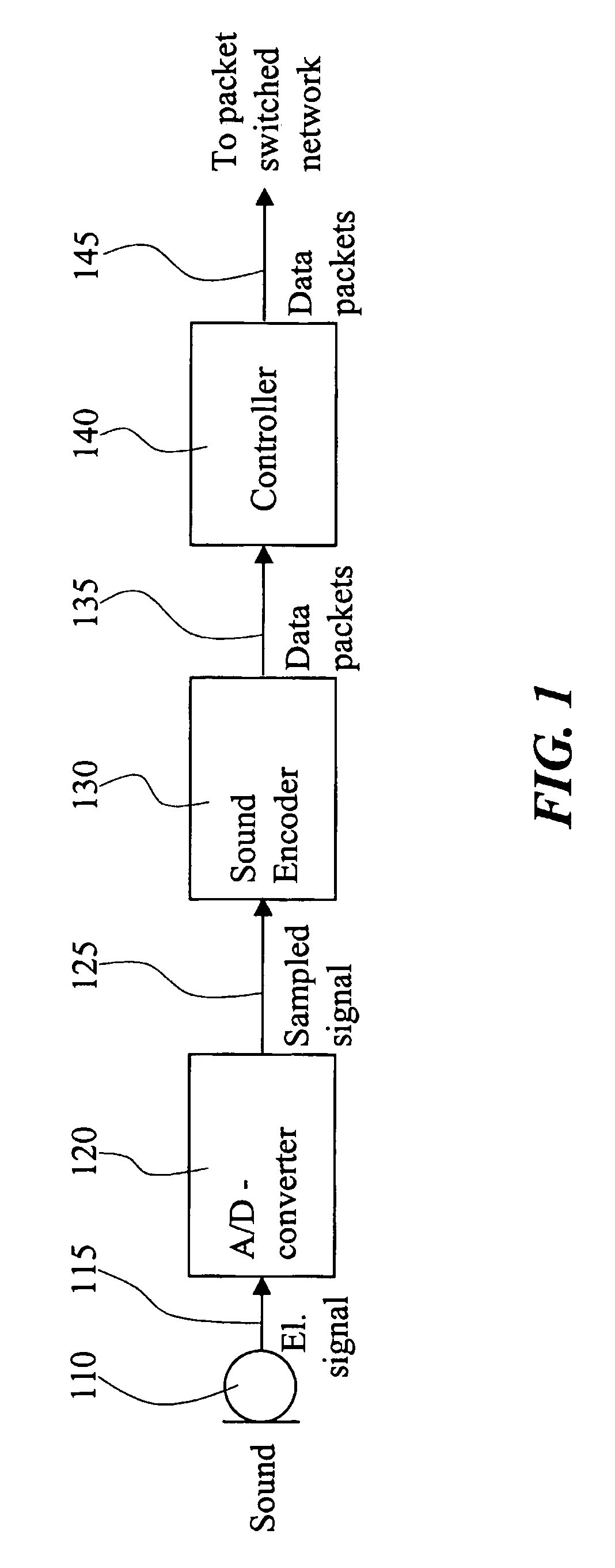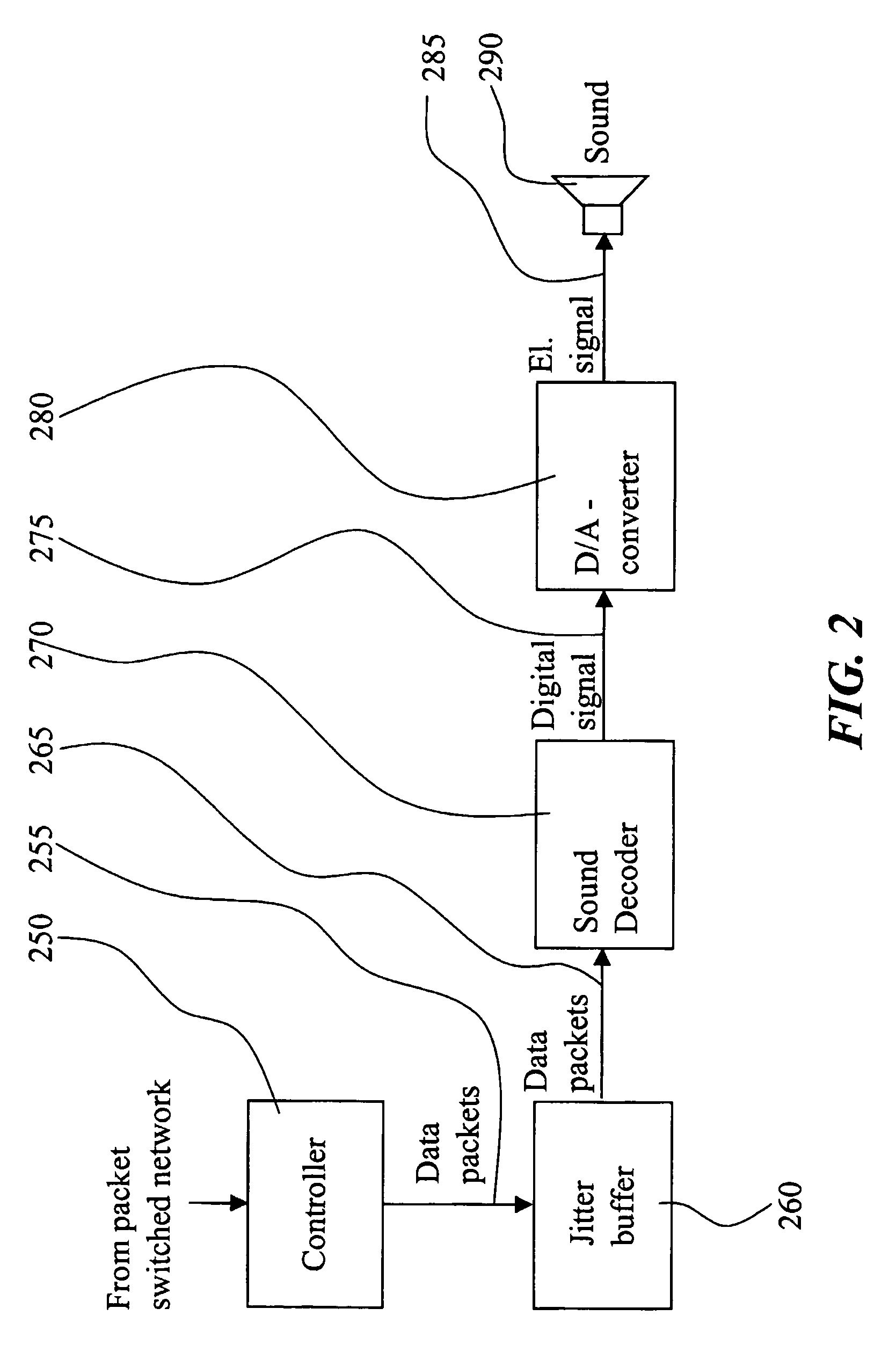Low bit rate codec
a low bit rate codec and signal technology, applied in the field of prediction encoding and decoding of signals, can solve the problems of data packet loss during transmission, inability to solve real-time applications that are delay sensitive, and inability to retransmit, so as to improve the approximation of the original signal, improve the reliability of packet loss, and improve the effect of signal prediction
- Summary
- Abstract
- Description
- Claims
- Application Information
AI Technical Summary
Benefits of technology
Problems solved by technology
Method used
Image
Examples
example c -
Example C-Code for the Encoding from the Start State Towards Block Boundaries
[0044]
void iLBC_encode( / * main encoder function * / float *speech, / * (i) speech data vector * / unsigned char *bytes, / * (o) encoded data bits * / float *block, / * (o) decoded speech vector * / int mode, / * (i) 1 for standard encoding 2 for redundant encoding * / float *decresidual, / * (o) decoded residual prior to gain adaption (useful for a redundant encoding unit) * / float *syntdenum, / * (o) decoded synthesis filters (useful for a redundant encoding unit) * / float *weightnum, / * (o) weighting numerator (useful for a redundant encoding unit) * / float *weightdenum / * (o) weighting denumerator (useful for a redundant encoding unit) * / ){ float data[BLOCKL]; float residual[BLOCKL], reverseResidual[BLOCKL]; float weightnum[NSUB*(FILTERORDER+1)], weightdenum[NSUB*(FILTERORDER+1)]; int start, idxForMax, idxVec[STATE_LEN]; float reverseDecresidual[BLOCKL], ...
PUM
 Login to View More
Login to View More Abstract
Description
Claims
Application Information
 Login to View More
Login to View More - R&D
- Intellectual Property
- Life Sciences
- Materials
- Tech Scout
- Unparalleled Data Quality
- Higher Quality Content
- 60% Fewer Hallucinations
Browse by: Latest US Patents, China's latest patents, Technical Efficacy Thesaurus, Application Domain, Technology Topic, Popular Technical Reports.
© 2025 PatSnap. All rights reserved.Legal|Privacy policy|Modern Slavery Act Transparency Statement|Sitemap|About US| Contact US: help@patsnap.com



